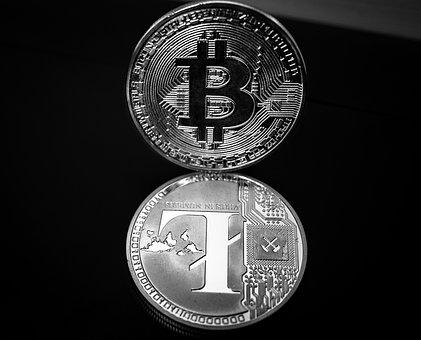Confused about the logistics of shipping your products? You're not the only retail enthusiast who's in this boat. In this article, we'll be exploring the two most common distribution models to consider and the advantages and disadvantages of both. Continue reading to discover which model is most beneficial to you.

Originally published on Retailbound.
Whether you’re new to the retail world or want to shake up your business, there are two distribution models to consider: drop shipping and traditional inventory. No clue on either of these? Then you’re in the right place. Because, in this article, we’re breaking down what’s involved in both to help you make the right choice for your business. Quality is important in a business’ success, but if you can’t deliver your promises, your business will be at a standstill.
Drop shipping distribution model
This distribution model involves a retailer marketing a product and then collecting payment from customers. It’s then your duty to order the item from a supplier. They will then ship the product directly to the customer.
There are several benefits to a drop shipping model, such as:
1. You don’t hold any inventory
One of the most common reasons for choosing the drop shipping model is due to no direct inventory costs. Because you don’t need to pay for a location to hold inventory, such as a storage facility. You’ll also avoid labor costs, up-front capital investments, and much more. And, since you don’t need a location to hold your stock, you can wipe away any worries about keeping track of inventory.
2. There’s no headache of shipping
Think back to a time when you sold an item on an e-commerce website, such as eBay. Remember the hassle and dread of having to physically pack and ship the item yourself? From purchasing packaging to traveling to a sorting office, there are a lot of stages involved. Drop shipping eliminates any of this stress since the wholesaler ships the product directly to the customer without you, the middle person, needing to do a thing.
Let’s also mention that some cumbersome items can be expensive and difficult to ship. For example, how would you ship a 4K TV by yourself and without any damage? It’d be a challenge, to say the least. Fortunately, this distribution model saves you the hassle.
3. Scrap any money stresses
Drop shipping takes away any financial risk since you get paid per sale. And, because this distribution model doesn’t require any upfront fees (aside from a website design and maybe ads), you have everything to gain and nothing to lose. This huge financial gain could also encourage you to think bigger and offer a wider spectrum of products since you have very few risks.
The retail industry isn’t perfect, and while drop shipping has a heap of benefits, it also has some disadvantages worth considering, too.
1. There are some fees involved
The catch of not needing to buy inventory upfront and ship the products yourself to your customer is that there are some fees involved. In particular, wholesalers typically charge a membership fee for using their drop shipping services. So, while a manufacturer might sell your product for 30–40% of the suggested retail price, you should expect to see an additional 10% reduction off your margins.
It’s not all doom and gloom if you research the fees involved at the beginning so you know what to expect. This involves conducting a thorough vetting process of any supplier you consider. That way, you’re clear on all shipping and membership charges before you start the journey.
2. Shipping costs can be hefty
Another price factor to keep in mind is shipping costs. As products are typically shipped from various wholesalers, shipping charges are greater. As an example, a customer might order several products, each from different suppliers. As the products won’t be shipped in one package to their home, they’ll be distributed individually. Therefore, the total shipping cost is more expensive rather than delivering in one package.
3. You have little control
One of the biggest benefits of drop shipping is that you get to sit back and relax while the money comes in. But one of the downsides of this distribution model is that you have very little control over the entire selling process. For example, a customer might receive an order late, or even an incorrect order. Or perhaps their order looks nothing like how it was advertised on the website. These factors are purely out of your control, so you’re unable to deliver a standard that you might otherwise want to.
Although customers can contact the supplier directly about their issues, you’re unaware of the customer service team’s policies, which could affect your business’s reputation. And we all know that a poor quality service could harm your business.
Additionally, since this distribution model limits your control, there’s poor communication between wholesalers and a drop shipper. So a product could be out of stock, but if this isn’t communicated on the website, a customer could order it anyway, potentially harnessing your reputation.
Traditional inventory distribution model
Another type of distribution model to consider is traditional inventory. As the name suggests, this is the most common distribution model. This involves you ordering an item from a manufacturer and keeping it in stock until a customer buys it. So, unlike drop shipping, you will have a tangible product. Yes, this distribution model is a lot more work than the above alternative, but it carries a lot of benefits with it. Let’s take a look.
1. You’re in control of the supply process
This distribution model, you’ll know exactly how much stock you have. You’ll also know what the shipping and inventory costs will be. In fact, you’ll rarely encounter surprise charges, unless you’ve not had a calculation right. As you’ll monitor inventory in real time, it’s very rare that you’ll encounter an out-of-stock problem.
Furthermore, you’ll be more in control of the customer service as you won’t be acting as the middle person. So if a customer complains, they’ll come to you directly, you have more say on the outcome.
3. You can send orders quickly
One of the flaws with drop shipping is that there’s often a timely delay between a customer making an order and receiving that product. Fortunately, the traditional distribution model limits any delays because you’re in control of any dispatches. Holding inventory enables you to fill the order and even ship it immediately. In a world where we’re more impatient, reasonable delivery times can make a huge difference to your business’s success.
Here are some disadvantages of this traditional distribution model to keep in mind.
1. You’ll need upfront money
For a traditional inventory model to work, you’ll need to have money upfront to buy your goods. The goal is to eventually make your money back and more, but this step could be a losing game. So there’s a lot of stress and anxiety that can come with this. Your risk is also greater if you broaden your product offerings, according to a University of Maryland study, so keep your selection narrow.
2. You’ll need storage space
Since you’ll be holding stock yourself, you’ll need a designated storage space, such as a warehouse. Some beginners choose to keep inventory a their homes, but you’ll still need room for this. And your home can quickly begin to feel less like a home. When looking into a physical location, you’ll also need to calculate the cost of utilities, shipping and handling costs, and rent. We also suggest investing in insurance to protect yourself and your goods in the event of theft, a fire, etc.
3. It’s a lot more work
Although there’s more potential to earn more money with the traditional inventory method, there’s a lot more work involved. So if you’re willing to devote your time, money, and energy into your retail business, you’re more likely to reach success. But be willing to prioritize excellent customer service over personal free time.
Which distribution model should you choose?
Now it’s your time to use the information we’ve provided to make a decision. Not sure which direction to head in? Our quick tip would be to ensure that you can deal with the disadvantages of the distribution model you choose. Or you could even choose a mixture of both models.
What’s your experience with either of these distribution models? Share your thoughts and feedback in the comments.





